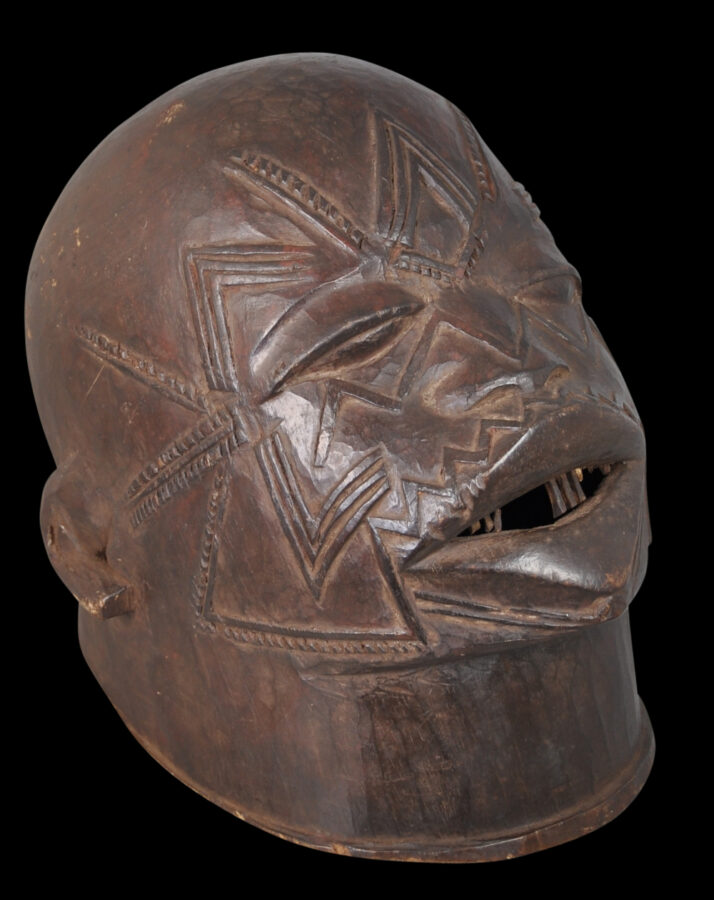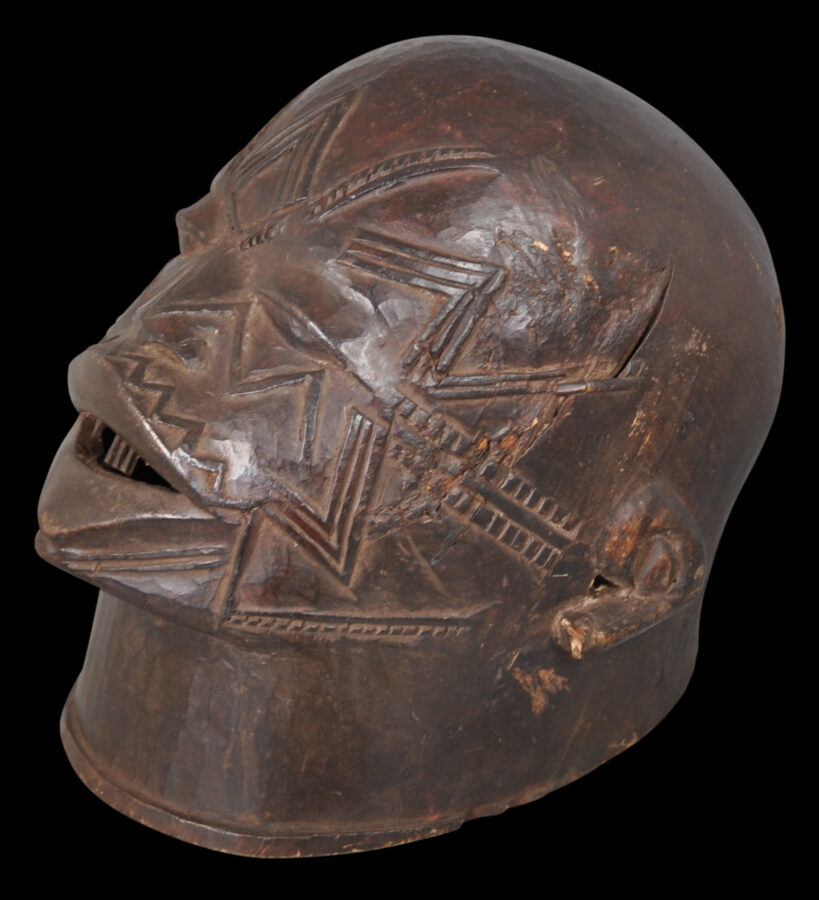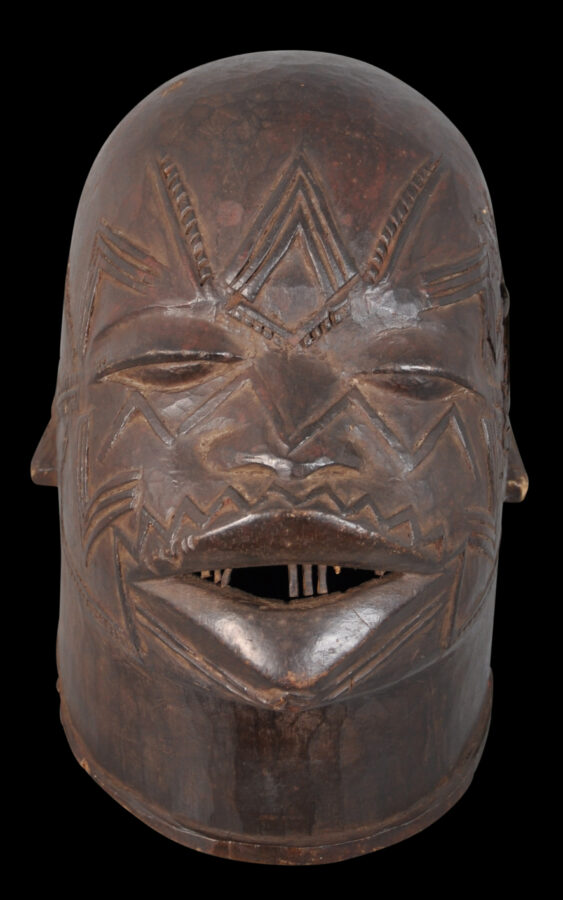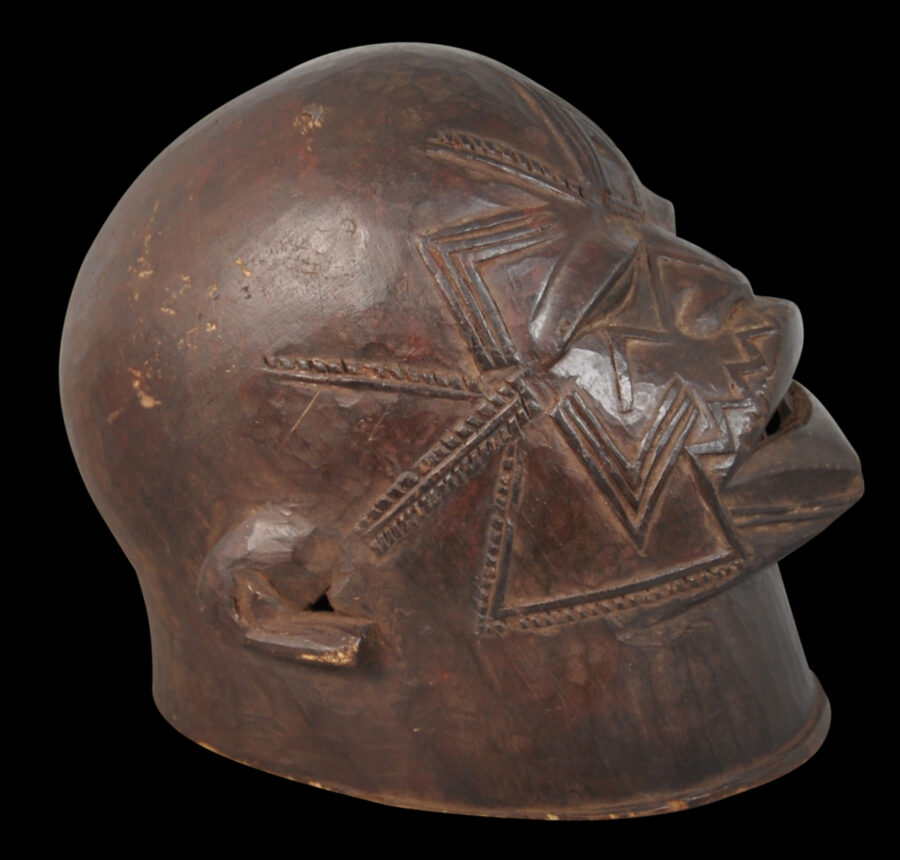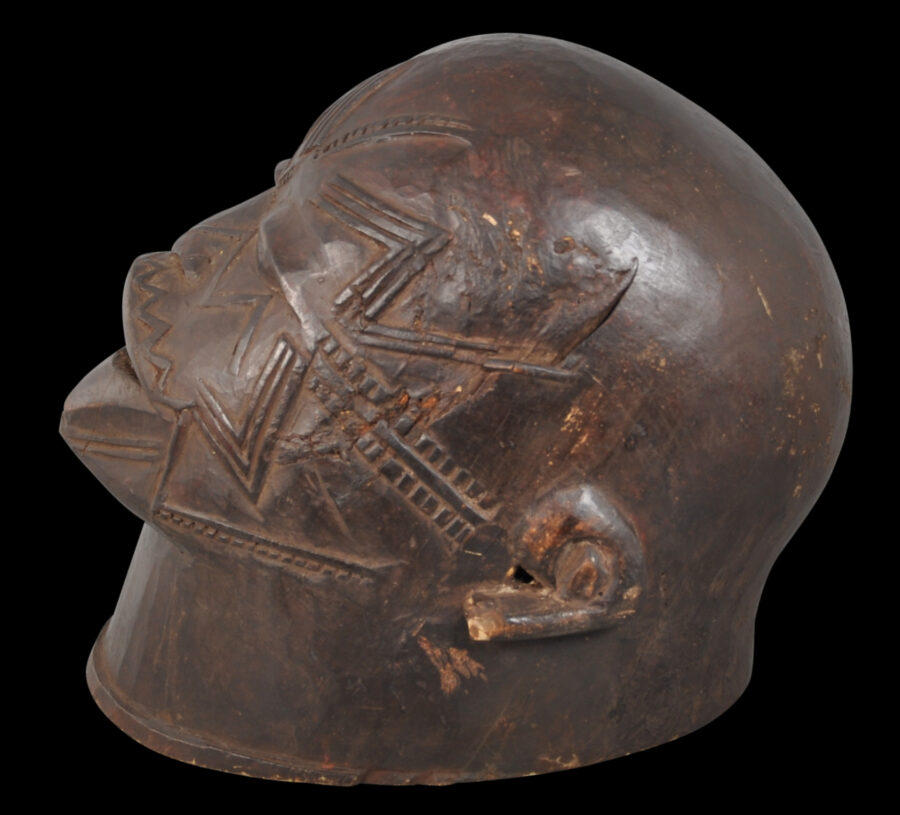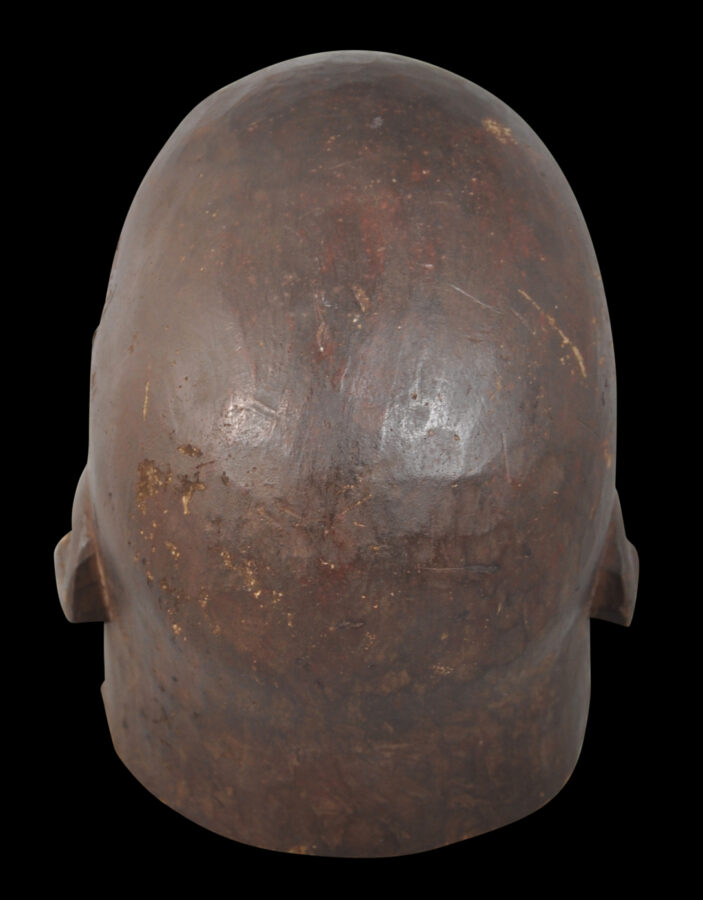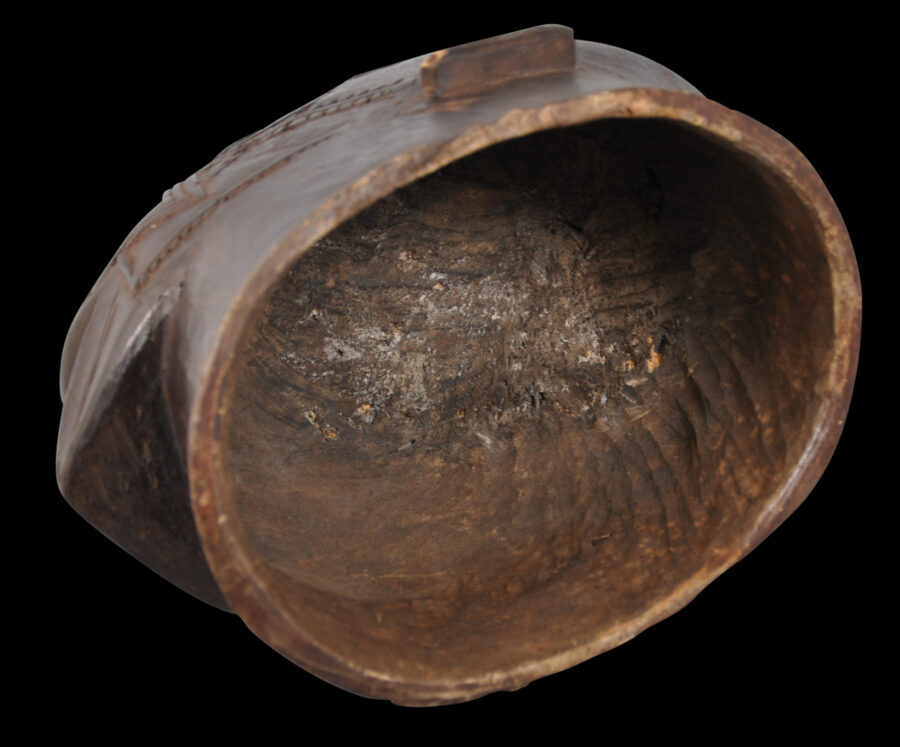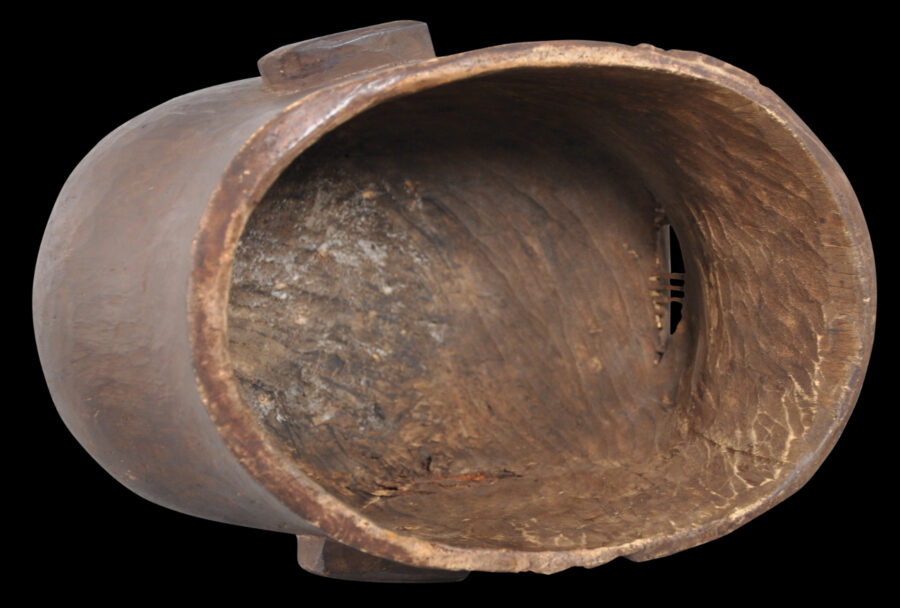This helmet mask known as a lipico has been carved from a single piece of light, soft, pale wood that has been stained brown. It is from the Makonde people of Tanzania and Mozambique in east Africa. Oddner (1986, p. 144) reports that such masks were worn by young boys during their circumcision rites.
The facial features of the mask include wide lips that are gently parted to reveal long, thin, wooden teeth; a broad nose; and much scarification in a zig-zag formation over the cheeks, forehead and chin.
Other examples have human hair attached to the surface of the scalp but this example has never had hair attached – not all examples do have hair.
Related examples are illustrated in Oddner (1986, p. 144) and Bacquart (1998, p. 200).
The Makonde people are found in both Tanzania and Mozambique but masks of this type are associated with the Makonde of Tanzania. The mask was sourced from the UK. Britain was the main colonial power in Tanzania which it called Tanganyika for most of the 20th century up until colonial rule ended in 1961.
The mask is in fine condition. There is some cracking on one side of the head – this seems related to the flow of the grain of the wood however.
References
Bacquart, J. B., The Tribal Arts of Africa, Thames & Hudson, 1998.
Oddner, G., Afrikanskt: Inspirationskälla för den Moderna Konsten, Malmö Konsthalls, 1986.


